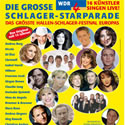ftm Radio Page - July 16, 2010
Tradition Is The Future

Public and private sector broadcasters live in different worlds, or so they profess. The mandate is different. The money is different. But when ratings day arrives it’s all the same: who wins and who doesn’t. It's traditional.
Let’s go to the phones
How smart is that?
RAJAR, the UK measurement service, released (July 14) its MIDAS report on radio usage through new media. The survey now includes smartphone usage. (See RAJAR presser here)
In some respects, the results are unsurprising. Nearly one in three UK adults (31%) are accessing radio content via the internet, either to listen live or ‘catch-up’ on missed programs. Platforms like Open.fm are attracting more people. Podcasts are popular with a reasonably significant portion of adults (15%). The new platforms appear to add rather than off-set time spent listening.
Also without surprise is the importance of the mobile phone platform. One in eight have listened via their mobile phone, half of those through a FM preset and a smaller portion via a specific app. One in five smartphone (3G) users have downloaded a radio app.
It seems a portion of radio users have made their choice of digital platform. /JMH)
Radio Page - July 9, 2010
Radio Page - July 2, 2010
Radio Page - June 25, 2010
Radio Page - June 18, 2010
Radio Page - June 11, 2010
Radio Page - May 28, 2010
Recently added radio audience figures and references
- France - National Radio Audience (15/07/2010)
national channels, sectors, market share, reach/TSL - Germany - Radio Audience (14/07/2010)
leading stations, 2010 national survey, daily reach - Belgium - Radio Audience (01/07/2010)
Flemish region, market share, trend - Belgium - Radio Audience (01/07/2010)
French region, market share, trend - Belgium - Major Media (16/06/2010)
Flemish region, radio broadcasters, public, private - UK - National Radio Audience (13/05/2010)
market share, trend, sectors - UK - London Radio Audience (13/05/2010)
market share, trend - UK - National Radio Audience (13/05/2010)
BBC/commercial 'gap' - France - Paris Radio Audience (23/04/2010)
national and local channels, market share - Spain - National Radio Audience (16/04/2010)
national channels, reach share, trend - France - National Radio Audience (15/04/2010)
national channels, sectors, market share, reach/TSL
More Resources
Also see ftm Knowledge
Europe's Radio - Western Europe – new
Opportunity meets tradition in Western Europe's radio broadcasting. Change has come fast and yet oh, so slowly. This ftm Knowledge file contains material and resources on public and private radio broadcasting in Austria, Belgium, France, Germany, Netherlands and Switzerland. 107 pages. PDF (June 2010)
ftm Members order here
Available at no charge to ftm Members, others from €49
Europe’s Radio – Eastern Europe
Eastern Europe’s radio writes new rules. In fact, most everything about radio in this region is new... and changes often. The ftm Knowledge file reports on Belarus, Bulgaria, Czech Republic, Hungary, Moldova, Poland, Ukraine, Romania, Russia and Slovakia. 65 pages PDF (February 2010)
ftm Members order here
Available at no charge to ftm Members, others from €49
Order
Europe’s Radio – Northern Europe
Northern Europe’s radio has a very digital sound. And change is in the air. Economic challenges abound for both public and commercial broadcasters. The ftm Knowledge file reports on Denmark, Estonia, Finland, Iceland, Ireland, Latvia, Lithuania, Norway, Sweden and the UK. 72 pages PDF (December 2009)
ftm Members order here
Available at no charge to ftm Members, others from €49
Order
Digital Radio - Forward...slightly
Digital radio is slowly finding its way. Broadcasters are challenged by shifts in business models, audience expectations and regulation limbo. This ftm Knowledge file details the promise of digital broadcasting and the paradigm shifts. 83 pages PDF (June 2009)
ftm Members order here
Available at no charge to ftm Members, others from €49
Order

The Six Radio Brands is about the uniquely European development of radio brands. Competition among broadcasters - and certainly between the public and commercial sectors - gives radio in Europe a rich dynamic. As consumers become more media-literate and demand more attachment broadcasters find target markets illusive. 100 pages. 2004 Available at no charge to ftm Members, €49 for others. Email for more information |